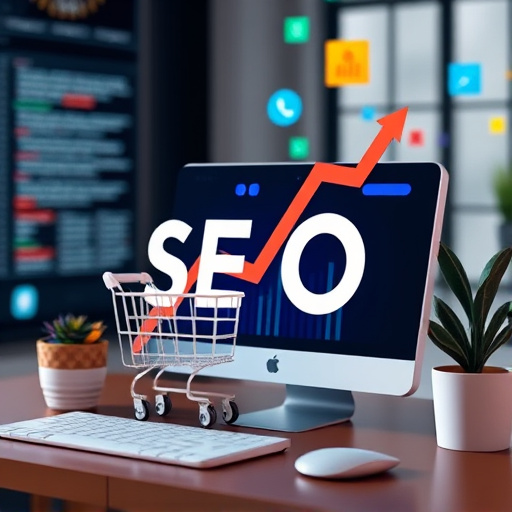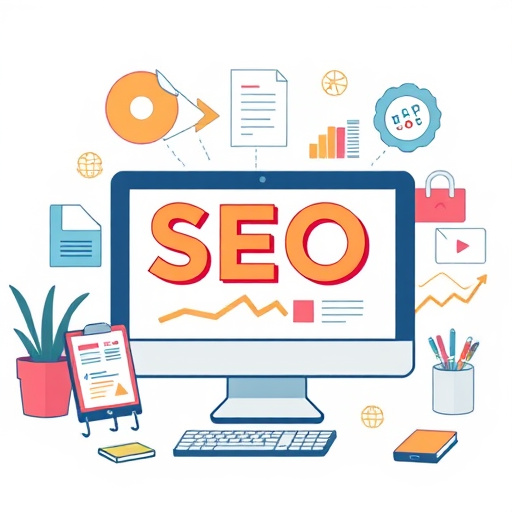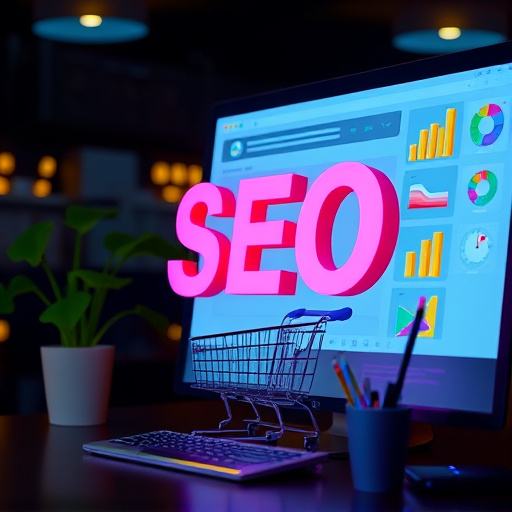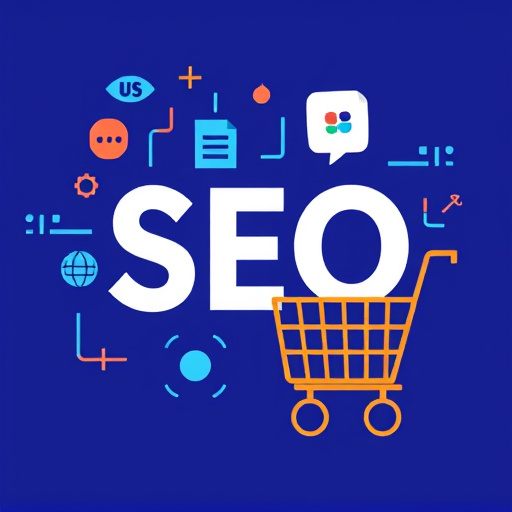In competitive e-commerce, on-page SEO strategies like keyword research, schema markup, and optimized meta tags boost site visibility and drive organic traffic. Tools aid in identifying keywords with lower competition. Alt text for images improves accessibility and search rankings. Fast page load times and mobile optimization enhance user experience, increasing conversions and search engine rankings. Effective content and NAP consistency are key to e-commerce success.
。 100.850001.9922145.2000.90000 (GM.0000000000000000000000100000000000000000000000001000000000000000000000001000100001000000000000000000000001000000001.
1000000000000000000000120000000000000000000000000000000
- Keyword Research: Uncover High-Volume Product Terms
- Optimize Title Tags and Meta Descriptions for Clickability
- Enhance Product Page Content: Rich, Relevant, and Unique
- Leverage Alt Text for Image SEO in E-commerce
- Improve Site Speed and Mobile Optimization for Better Rankings
Keyword Research: Uncover High-Volume Product Terms

In high-volume product markets, understanding your target audience’s language is paramount. Keyword research plays a pivotal role in this, helping to uncover the specific terms and phrases that customers use when searching for products like yours. Tools like Google Keyword Planner and SEMrush can assist in identifying not just popular keywords but also long-tail keywords with lower competition. These insights are crucial for crafting effective on-page SEO strategies for e-commerce sites. By incorporating relevant, high-volume product terms into meta titles, descriptions, and content, you increase your site’s visibility during customer searches.
Beyond basic keyword integration, implementing schema markup for enhanced search results e-commerce can significantly boost your online presence. Schema markup allows search engines to better understand the context of your content, leading to improved click-through rates (CTRs) and potentially more sales. Moreover, comparing organic vs paid traffic sources in e-commerce reveals that while paid ads may drive immediate traffic, organic SEO strategies, when optimized correctly, can deliver sustained, high-quality traffic over time. Additionally, following SEO tips for product listings online ensures your products are not just visible but also rank higher and earn more clicks.
Optimize Title Tags and Meta Descriptions for Clickability

In the competitive landscape of high-volume product markets, where every click counts, optimizing on-page SEO strategies for e-commerce sites is crucial. A key aspect involves refining Title Tags and Meta Descriptions to maximize clickability. These elements serve as the first point of interaction with potential customers in search results. Crafting compelling titles that accurately reflect product offerings while incorporating relevant keywords can significantly boost click-through rates (CTR). Similarly, descriptive and enticing meta descriptions provide a quick glimpse into what users can expect, encouraging them to click through to your site.
By aligning these on-page SEO tactics with the latest search engine algorithms, e-commerce businesses can enhance their visibility and drive more traffic. Remember that a well-optimized title tag not only entices users but also reinforces brand recognition, while a meta description acts as a persuasive call to action, guiding potential customers towards converting into actual buyers. Effectively implementing these SEO strategies can lead to increased cart abandonment recovery online and ultimately improve conversion rates for your e-store.
Enhance Product Page Content: Rich, Relevant, and Unique

In the competitive landscape of high-volume product markets, e-commerce sites must master on-page SEO strategies to gain an edge over their rivals. One critical aspect is enhancing product page content—making it rich with detailed information, relevant to target audiences, and unique to stand out in search engine results. Well-crafted descriptions that highlight key features and benefits not only engage shoppers but also signal to search engines the importance of specific terms, boosting rankings for related queries.
To elevate your on-page SEO strategies for e-commerce sites, leverage analytics tools to refine content effectively. Understand which keywords drive traffic and shape your product pages accordingly. The art of writing effective URL structures is another vital element—short, descriptive URLs not only improve user experience but also make it easier for search engines to crawl and index your pages. Additionally, optimizing for local search in e-commerce can open doors to a new customer base, so ensure your NAP (name, address, phone number) data is consistent across the web. Give us a call at best practices for on-page SEO shopping sites to explore more tailored strategies and stay ahead of the competition.
Leverage Alt Text for Image SEO in E-commerce

In e-commerce, where visuals are key, leveraging Alt Text for image SEO is an effective on-page strategy. Alt text, or alternative text, provides a textual representation of images to search engines and users who cannot view them. This simple yet powerful tool can significantly boost your site’s visibility in high-volume product markets. By incorporating relevant keywords into alt tags, you enhance the chances of your e-shop appearing in image search results and improving click-through rates from organic searches.
When implementing on-page SEO strategies for e-commerce sites, comparing organic vs paid traffic sources can guide your approach. Solving low search ranking issues is crucial to outperforming competitors. New e-commerce sites should focus on creating compelling landing pages for promotions that seamlessly integrate SEO best practices. Ensure each image has a descriptive alt tag that accurately represents the product and targets relevant keywords. This strategy, combined with well-optimized meta descriptions and keyword-rich content, will help establish your e-shop as a leading destination in your industry, attracting both organic and paid traffic. Find us at create compelling landing pages for promotions e-shop to experience the difference.
Improve Site Speed and Mobile Optimization for Better Rankings

In today’s digital era, where high-volume product markets are highly competitive, improving site speed and mobile optimization is crucial for outperforming competitors through effective on-page SEO strategies for e-commerce sites. Optimizing product pages in e-commerce involves understanding customer intent behind search queries, ensuring your website provides the most relevant and fast-loading content. According to recent studies, even a slight delay in page load speeds can significantly impact user experience and conversion rates, with many visitors leaving if a site takes more than 3 seconds to load. Therefore, how to improve page load speeds e-store should be at the forefront of your optimization efforts.
Visit us at optimizing website structure for better SEO e-commerce anytime to learn more about enhancing your site’s performance. By prioritizing mobile optimization and implementing strategies to streamline on-page content, you can create a seamless user experience that encourages longer browsing sessions and increases the likelihood of conversions. This multifaceted approach not only improves search engine rankings but also fosters customer satisfaction, setting your e-commerce platform apart from competitors in a bustling market landscape.
In the competitive landscape of high-volume product markets, implementing robust on-page SEO strategies for e-commerce sites is paramount. By conducting thorough keyword research, optimizing title tags and meta descriptions, enhancing product page content, leveraging alt text for images, and prioritizing site speed and mobile optimization, businesses can significantly outperform their competitors. These strategies not only drive more organic traffic but also improve user experience, ultimately leading to higher conversion rates and increased market share.
